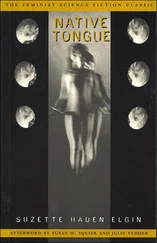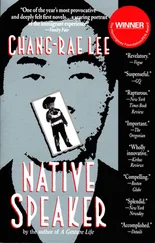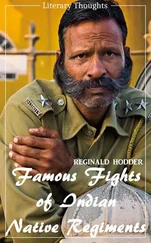Her mother had thought that sports were an inappropriate and undignified way for a young lady to order her life. There was the endless travel that inhibited stable family building. The casual dressing that indicated a complete disregard for aesthetics and fashion. And there was also the fear of lesbianism. Women couldn’t be allowed to turn into men, her mother had consistently preached, and one way this pernicious thing happened was through sports. As a result, Marie-Anne’s exceptional collegiate career went entirely unknown to her parents. They didn’t find out how good she was. How she could fly. A butterfly of thunder and lightning, adorned in spandex shorts and crew socks, her ponytail like some manic crankshaft, pushing her up and down the escalator that only she could see.
I used to cover women’s sports for the Emory Wheel. My beat was the tennis and swim teams. But one day at the student center, as I manned a table for a toy drive for tots, I saw Marie-Anne headed toward the gym with her friends, in those spandex shorts. The knee pads around her ankles loose like unwilling manacles; shoelaces undone; nearly a head taller than anyone around her. There was a drawstring bag over her shoulder, clapping against her sculpted thigh. She passed by me without looking my way, and in her lengthy form there was so much presence that I followed. I told myself that I was just going to the gym to write about the volleyball match against NYU. What I ended up writing, however, was a four-page, single-spaced biography of Marie-Anne. Her monstrous attacking prowess. How her coaches devised offensive schemes around her ability to hit kills crosscourt even if she was fading down the line. Her extraordinary leaping. Her jump serve, the only topspin serve on the team, that had an ace-to-fault ratio higher than former all-American Bernice Darren’s. I took particular delight in that serve. What a thing of beauty the toss was. Like she was a waitress passing through a crowd with a tray, she would perch the ball on her palm, way up in the air, taking a moment to look around at her team, at the opposition, at her coaches, at the crowd. With a flick she tossed the ball both forward and high, releasing it as if it was a dragonfly, and then proceeded to run after it like an obsessed entomologist. She leapt over the line, the drawn hand smashed the ball, and the spanked sphere screamed through the air and made a dipping arc over the net. Sometimes the ball dipped so hard and so fast that the opponents didn’t even have a chance to move. They would just look at one another after the play was over, as if the ball had traveled faster than communication.
There were other things too. Like the leadership Marie-Anne displayed, hugging, yelling, clapping, gesturing; I speculated that she was an ENTJ on the Myers-Briggs scale. She was intensely protective of the smaller players, especially when the enforcers on the other side tried intimidating them with stare-downs and smack talk. But the high point of the profile was a long paean to her presence, inspired by my course work at the time. How she redefined feminism, because instead of slouching and compressing herself to fit some ideal version of what constituted femininity, she occupied as much room as she desired. How she moved all over the court, confident in her mastery of space, a lioness in the Serengeti — an attitude that she would one day carry out into the world, and from which both men and women could draw lessons for their own lives. Without meaning to, I had taken her biggest sporting shortcoming, namely her freewheeling, and turned it into her asset, her strength. I finished by comparing her double-clutch to Michael Jordan’s.
For me the profile hadn’t been an attempt to appeal to the real Marie-Anne. It was something akin to worship, an articulation of sentiment that didn’t demand affirmation in return. The thought of accessing someone like her — someone who looked like her, who hobnobbed with the fraternity boys, who drank alcohol on a fake ID — had never even entered my mind. I was content with the idealized version of her that I had put on paper. The tall, glorious athlete. The apex of vitality and unrestrained energy. The superstar. Besides, I was cognizant of the distances between us, particularly related to size. I was short enough to be a jockey. She carried herself like an undomesticated mustang. There couldn’t have been communion between us. But then, out of the blue, she had reached out. You marketed me really well, she wrote in an e-mail. Do you want to come to the Tri Delt house and write a follow-up piece?;-)
It hadn’t been an invitation of the romantic sort. It was exactly what she had written. In the meeting she and her sorority sisters decided that I could be very useful to them in promoting their activities and wanted to know if I was up for it. I agreed to everything, turning into Marie-Anne’s personal publicist. Her life became my beat. If her sorority held an event, I wrote about it. If a group of her friends hosted a speaker, I was there in the front row. I helped her publicize her fundraising and I pushed feel-good stories about the volleyball team to various news stations around the city. It was an internship where the only payment was her validation. I never asked her out and she never suggested that there could be a romantic spark between us.
But loyalty became its own seduction. Because I was always around, always observing, always learning, Marie-Anne told me things that she didn’t tell others, particularly her secret fondness for writing fiction. Between the volleyball team and the sorority house she never had the requisite solitude to write her stories, the ones about growing up under a suffocating mother, the ones about experimenting with girls at Christian youth camps. So under the guise of taking her away for an interview, or to have her look over my latest write-up about the sorority’s activities, I would sneak her into my dorm room and let her write. I, meanwhile, lingered around, listened to Portishead, or printed quotes and plastered them on the wall. Once she finished a story, she left it for me to read when she was away and then tell her what I thought about it. We weren’t in a relationship, but we were slowly getting there.
The story that brought us together for the first time was called “The Jock.” It was about a muscular athlete named Henry, the star center of his college basketball team, who was regularly humiliated by his teammates because of his chastity. He pretended that it didn’t bother him; but it hurt him that his love of the church, his immersion into the essence of Christ, didn’t eliminate from the world the taunt of the peer, the sarcasm of other youths. The bullying became so bad that Henry killed himself, dramatically hanging himself in the nylon nets of a basketball hoop in the practice gym. The morbid story gave rise to our first conversation about sexuality. It allowed me to reveal to Marie-Anne that I was still a virgin. She shocked me and said she was too, and that she intended to remain that way until marriage, because she didn’t trust anyone except her future husband, who was bound to her by something more meaningful than the accomplishment that was intercourse. “That’s what I want too,” I said. “To wait till marriage.” I had exulted in response, because my parents had told me to stay a virgin until marriage, and because following their diktat had been easy given my anxiety with women. Within a few hours, in the sanctuary of the dorm room, surrounded by Marie-Anne’s stories, I was in her arms, writhing and wrapping myself around her river of a body, lapping insistently, letting her tongue into my mouth. Oral penetration had been enough for us.
For a little while it had been unbelievable to me that, given the disparity in our sizes, Marie-Anne would want to be with me. When I pressed her about this she told me that she actually wanted to be with a man smaller and thinner than her. It was because of her only high school boyfriend. His name had been Emmit Thomas. A varsity football player whom she dated precisely because she thought she was meant to be with a bigger man. He had six inches and a hundred pounds on her. He forced himself on her in the car. He hadn’t gotten as far as he wanted. But neither had she been able to stop him from overpowering her and getting some fingers into her before she managed to escape. It had been a watershed moment for her in terms of love. She would never again let herself be attracted to a bigger man; she feared the physical violence a male might inflict upon her more than the social consequences of flouting the aesthetics of gender relations. “It’s not strangers that scare me,” she had said. “I am scared of being scared of the ones closest to me.” My smallness, in other words, imparted security. It had made sense to me, the way a doorstopper could hold an entire door.
Читать дальше



![Анастасия Быкова - Believer [СИ]](/books/424458/anastasiya-bykova-believer-si-thumb.webp)








